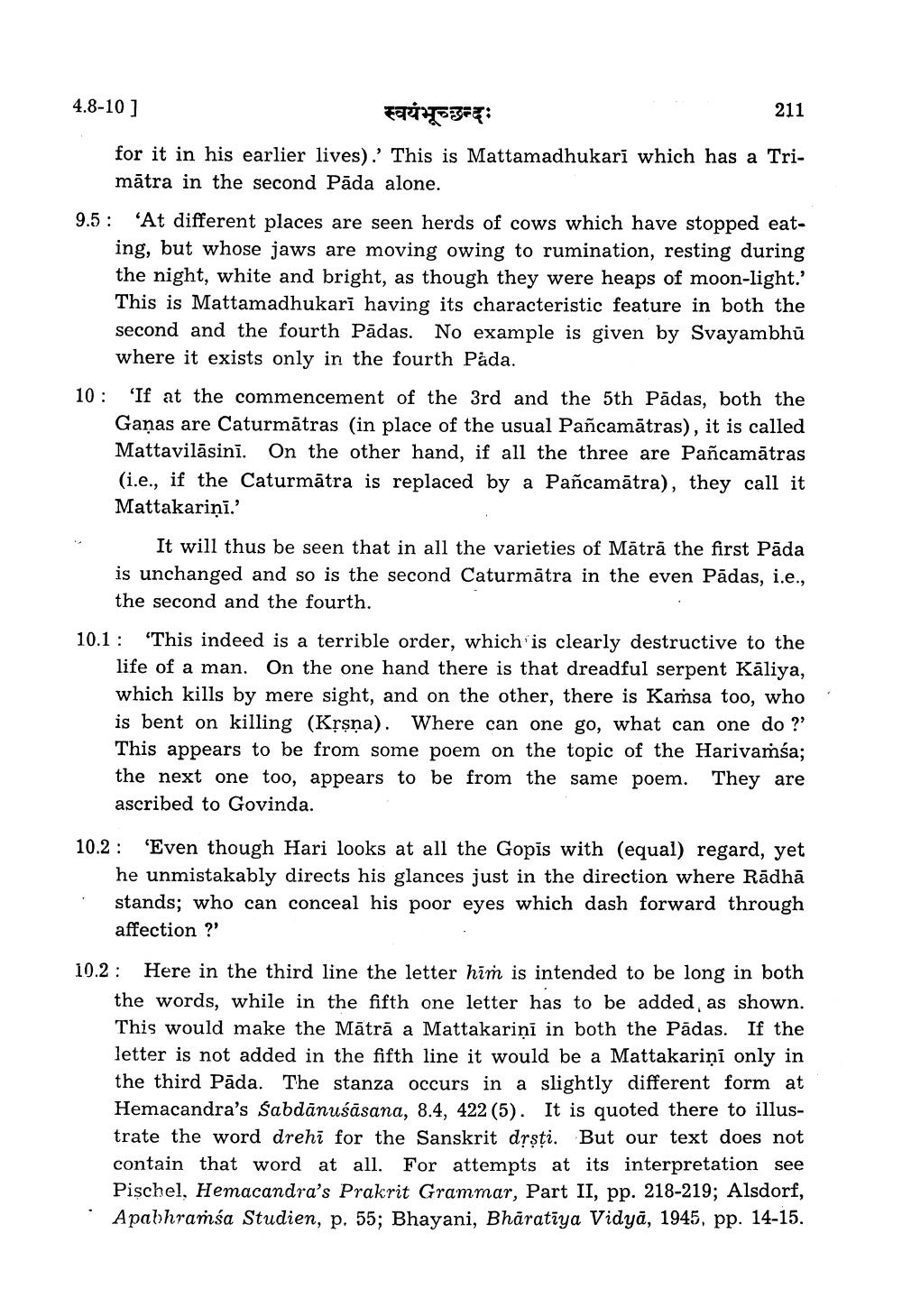________________
4.8-10 ]
स्वयंभूच्छन्दः
211
for it in his earlier lives).' This is Mattamadhukarī which has a Trimātra in the second Pāda alone.
9.5: 'At different places are seen herds of cows which have stopped eat
ing, but whose jaws are moving owing to rumination, resting during the night, white and bright, as though they were heaps of moon-light.' This is Mattamadhukarī having its characteristic feature in both the second and the fourth Pädas. No example is given by Svayambhū where it exists only in the fourth Påda.
10: 'If at the commencement of the 3rd and the 5th Padas, both the
Gaņas are Caturmātras in place of the usual Pañcamātras), it is called Mattavilāsini. On the other hand, if all the three are Pañcamātras (i.e., if the Caturmātra is replaced by a Pañcamātra), they call it Mattakariņi.'
It will thus be seen that in all the varieties of Mātrā the first Pāda is unchanged and so is the second Caturmātra in the even Pādas, i.e., the second and the fourth.
10.1: "This indeed is a terrible order, which is clearly destructive to the
life of a man. On the one hand there is that dreadful serpent Kāliya, which kills by mere sight, and on the other, there is Kamsa too, who is bent on killing (Krşņa). Where can one go, what can one do ?' This appears to be from some poem on the topic of the Harivañía; the next one too, appears to be from the same poem. They are ascribed to Govinda.
10.2: 'Even though Hari looks at all the Gopis with (equal) regard, yet
he unmistakably directs his glances just in the direction where Rādhā stands; who can conceal his poor eyes which dash forward through
affection ?' 10.2: Here in the third line the letter him is intended to be long in both
the words, while in the fifth one letter has to be added as shown. This would make the Mātrā a Mattakarini in both the Pādas. If the letter is not added in the fifth line it would be a Mattakariņi only in the third Päda. The stanza occurs in a slightly different form at Hemacandra's Śabdānuśāsana, 8.4, 422 (5). It is quoted there to illustrate the word drehi for the Sanskrit drsti. But our text does not contain that word at all. For attempts at its interpretation see Pischel, Hemacandra's Prakrit Grammar, Part II, pp. 218-219; Alsdorf, Apabhraíśa Studien, p. 55; Bhayani, Bharatiya Vidyā, 1945, pp. 14-15.




